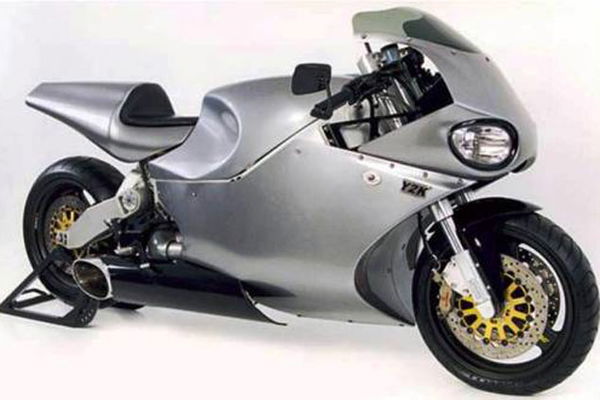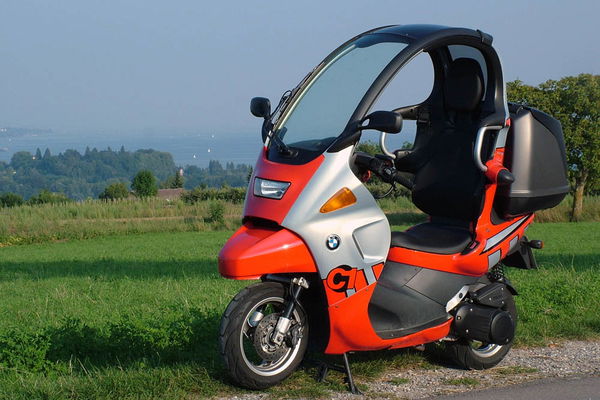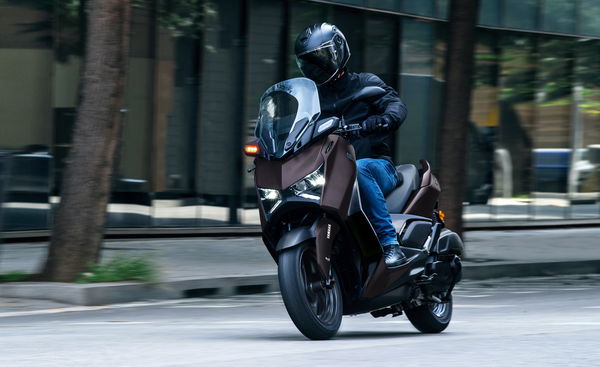Top 10 - the least conventional production motorcycles
A salute to the manufacturers who dared to be different
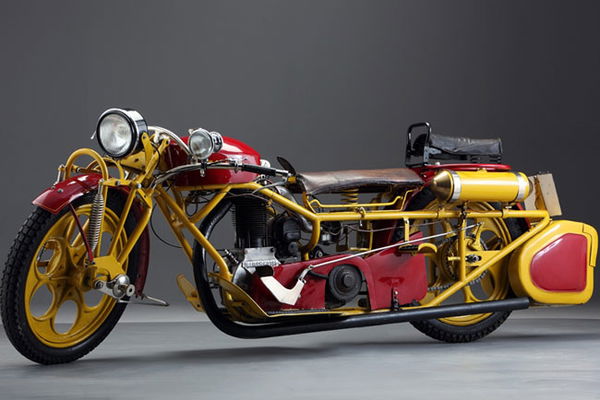
IT’S not uncommon to hear the criticism that bikes are lacking in variety. Compare a ZX-10R and a BMW S1000RR and you’ll spot so many similarities of design it’s like the two were separated at birth.
To be fair, it’s to be expected. Just as animals have evolved similar solutions to cope with their environments even when they’re genetically totally different, bike designers will often independently come up with the same way of addressing the demands that we, as customers, make of them.
However, over the years some firms have refused to fall into line and created machines that were defiantly different. Here’s our not-at-all-definitive list of ten of the strangest.
1: Gilera CX
AS the 1980s turned to the 90s, single-sided swingarms were very much in fashion. Brought into fashion by the likes of the Honda RC30, single-siders cropped up on everything from Aprilia’s AF1 to BMW’s K1.
But Gilera was pretty much alone in deciding that what it really needed was a single-sided front to match the rear.
It achieved it with a Paioli-made single-sided fork, effectively like a single oversized fork leg mounted centrally above the wheel with a curved alloy arm attaching it to the spindle. The result was a bike that, from the right hand side at least, appeared to have nothing connecting the wheels to the rest of the machine. Throw in some crazy-looking bodywork, disc-like wheels and modern touches like indicators mounted in the mirror housings, the result was one of the most remarkable-looking bikes ever offered for sale.
Unfortunately it was only a 125, and even if its two-stroke single managed an impressive 30-odd bhp, it was a very expensive proposition. Have you ever seen one on the road?
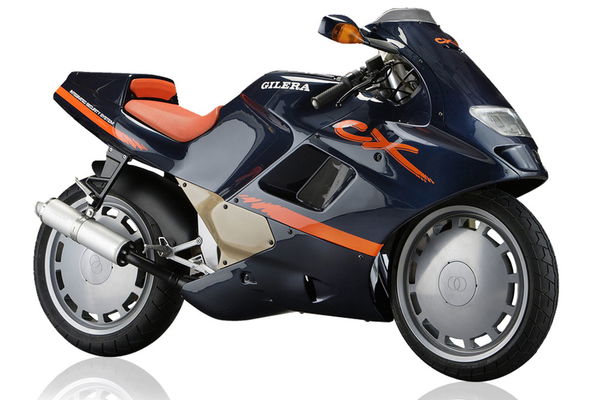
2: Yamaha GTS
FOLLOWING the funny-front-suspension theme of the Gilera, Yamaha’s 1993 GTS was something of a surprise, coming as it did from one of the world’s biggest bike firms.
A single-sided front swingarm, along with a top link above the wheel and with a hub held between them, meant that while it wasn’t the first hub-centre-steered production bike it was one of the few that you might actually have been able to see in your local dealer. Chuck in ABS brakes and fuel injection on the Genesis-derived 1000cc engine and it was startlingly radical – both then and now.
Sadly the riding experience didn’t live up to the hype, and the styling didn’t do it much favours either – surely after all that expense on a single-sided front end, it wouldn’t have been asking too much to have a single-sider on the back, too?
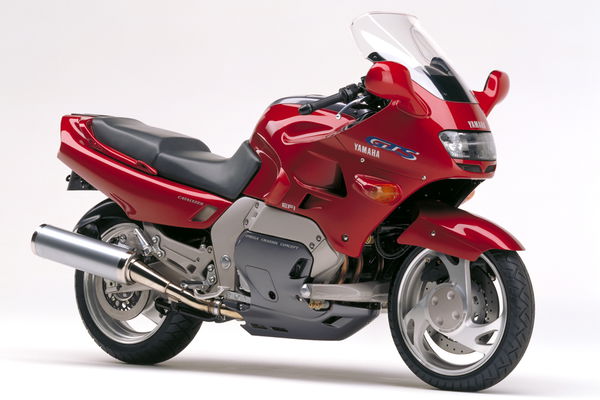
3: Yamaha WR450F 2-Trac
AS if to prove it wasn’t put off doing the unconventional by the sales failure of its hub-centre-steered GTS1000, not long after dropping that bike Yamaha started work on its next big idea – two-wheel-drive.
In fact, 2WD had been considered for the GTS – the front swingarm leant itself to the idea – but on reverting to forks it was impractical to bolt on a mechanical drive system. The answer, developed along with Yamaha’s partners at Ohlins, was a hydraulic drive system.
Using an engine-driven pump, a couple of flexible hydraulic pipes and a hydraulic motor mounted at the front hub, bingo, they had a 2WD set-up that would work with conventional forks. They even experimented with fitting the system to an R1, but its only production outing was on the WR450F 2-Trac, made in tiny numbers for a select few.
It worked well, but didn’t make the splash that might have been expected for such a radical departure from the one-wheel-drive norm, so there was no follow-up.
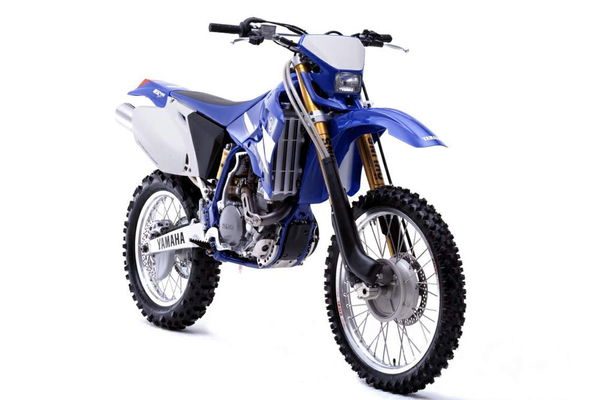
4: Honda DN-01
ONE of the limits for Yamaha’s hydraulic-drive 2WD bike was the fact the drive system couldn’t carry a huge amount of the engine’s power to the front wheel. Honda’s DN-01 might not have had 2WD, but it showed that hydraulics could be used to carry considerably more power.
The bike’s transmission was a masterpiece, with an angle-drive hydraulic pump that allowed the amount of fluid pumped per revolution to be completely variable – changing the effective gearing as it did so. It was clever stuff.
So it was a shame Honda shackled that transmission to its ancient Deauville V-twin engine and wrapped the whole lot in styling that even its mother couldn’t love. Oh, and then asked crazy-high prices for the finished caboodle. Sales were not high, some dealers joke that DN-01 stands for 'Did Not Order One'. The bike was killed off in short order but may one day be a future classic.
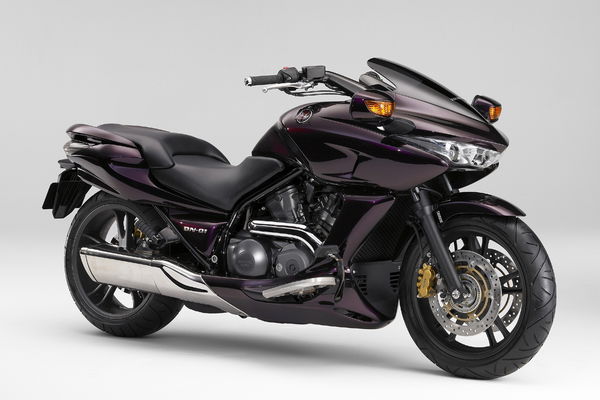
5: Rokon
AS Yamaha showed with its 2WD 2-Trac bike, the problem with getting drive to a front wheel is dealing with the front suspension – how do you get power to a wheel that’s got to both steer and move up and down? US firm Rokon’s solution is to keep the 2WD and ditch the suspension…
In fact, while most of the bikes on our list are short lived, glorious failures, Rokon is something of success: it’s been making bikes since the 60s, and the basic design dates back even further to the 1958 Nethercutt Trail-Breaker. They’re still going strong today.
No suspension, a pull-start engine from a lawnmower – a Honda, actually – and two wheel drive achieved with a combination of belts and shafts mean there’s nothing quite like a Rokon. And that’s before we get to the drum-like wheels that can be filled with water or even spare fuel, or left empty to help the bike float. It’s more like a two-wheeled tractor than a motorcycle in the conventional sense. But who’s to argue with something that’s managed to survive so long?
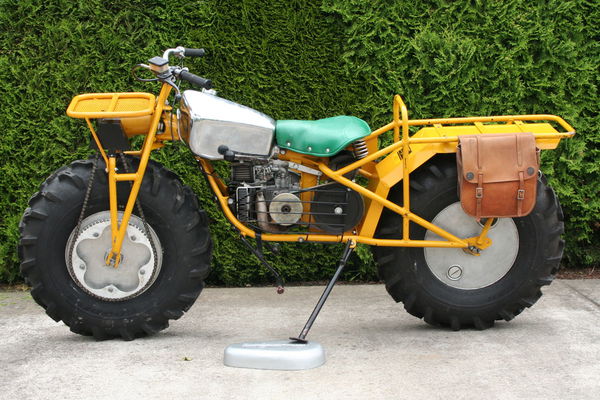
6: Boss Hoss
ROKON’s lawn mower engine couldn’t be further away from our second American oddity – the 6200cc Boss Hoss.
Sticking car engines into bikes is an idea that’s been around since the world was black and white, but while most are home-built horrors Boss Hoss has been doing it for years with a selection of ever-bigger V8s.
OK, so they’re not lookers. But it’s hard to argue with something that’s making 445bhp and 445lbft. Even taking the fact a Boss Hoss weighs getting on for 500kg and only has two gears in its automatic transmission, it’s still going to be quite an experience. And like Rokon, they’ve got a strong band of followers; Boss Hoss has been doing this for 23 years.

7: MTT Y2K Turbine
WHAT do you do when bolting a car engine to a bike is just so passé? How about finding one from a helicopter and using that? Oh, it’s already been done in the MTT Y2K superbike.
It’s powered by a Rolls Royce gas turbine, as used in various helicopters and aeroplanes, which offers 320bhp and over 400lbft of torque without the sort of weight penalty that a big car engine creates. Oh, and it runs on diesel.
On the down-side, gas turbines don’t have much in the way of throttle response. Annoying when you’re piling on the power, but even more disconcerting when you roll off and the revs and speed continue to rise for a little while before the engine catches up with your commands. Oh, and the exhaust chucks out heat like, well, a jet engine… Jay Leno reckons he’s melted the bumpers of following cars when riding his Y2K.
8: Suzuki RE5
THE Y2K isn’t the only sports bike to have ditched the old-fashioned piston engine for something with less moving parts – several ‘real’ bike firms have done the same, only with Wankel rotary engines instead of turbines.
We’ve picked Suzuki’s RE5, but Norton’s rotaries or the Hercules rotary have the same claim to fame.
In theory, the Wankel was perfect for a bike. Virtually vibration-free, great specific power outputs (62bhp from just under 500cc in the 1974 RE5), what’s not to like? Well, actually, the reliability, for a start.
The RE5 also offers (or perhaps suffers from) styling that comes from a car designer – in this case Giorgetto Giugiaro. Now his cars have been great. The MK1 Golf. The Lotus Esprit. But car designers seem to struggle with two wheels. The RE5 wasn’t that bad, but its distinguishing feature – a drum-style instrument pod with a tail light in the same shape so it looked like it always had a tool roll on both the front and the back – didn’t help.
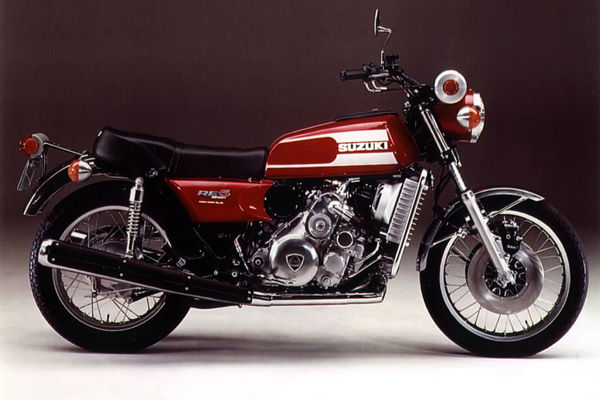
9: Bohmerland
BIKES have taken many shapes and sizes over the last century or so, but few have been as outlandish as the 1924-1939 Bohmerland.
What marks it out? Well, the fact it was designed to seat three or even four people for a start. Not in that third-world-country, whole-family-squeezed-on-a-scooter style, either. No, it was properly designed to do it. So it was long. Really long in the case of the four-seater version – we’re talking about a ten-foot wheelbase here.
That element of the design might not have caught on, but we all owe the Bohmerland one debt of gratitude: it was by far the first bike to use cast alloy wheels.

10: BMW C1
BEYOND having some sort of engine and balancing on two wheels in line, if there’s one defining thing that all motorcycles share it’s the fact they leave the rider open to the elements.
Even a Goldwing, while wrapping you in every conceivable comfort, provides no protection against sun-stroke, rain or coconuts dropped by passing swallows (African, of course). They don’t have roofs.
Except BMW’s C1; a bold attempt to make a bike for car drivers; roof, seat-belt, safety cage and all.
No, it didn’t catch on – although one or two firms did launch copycat designs shortly after it appeared. It seems that car drivers, by definition, wanted cars, while motorcycle riders preferred, erm, motorcycles. Who’d have thunk, eh?
Strangely, C1s do still have a small but loyal following, keeping used prices relatively high, and BMW has even hinted that it might bring the idea back, showing off a revamped, electric-powered C1 concept a couple of years ago.
So there you have it, the 10 least conventional production motorcycles ever made. Are there any you think we've missed?
